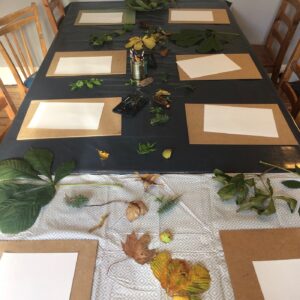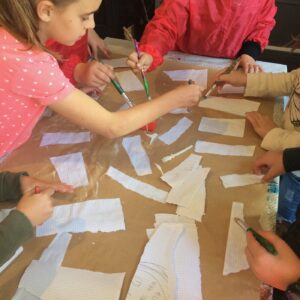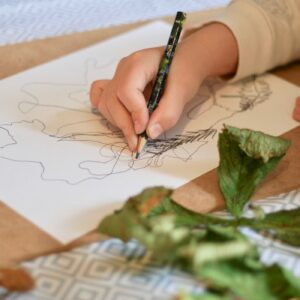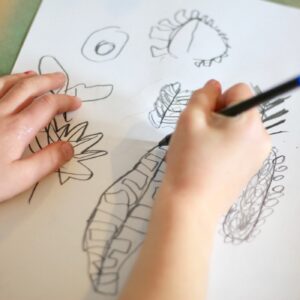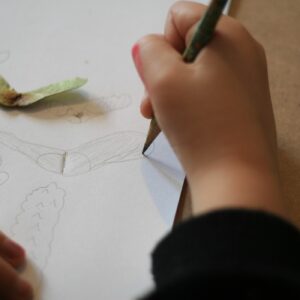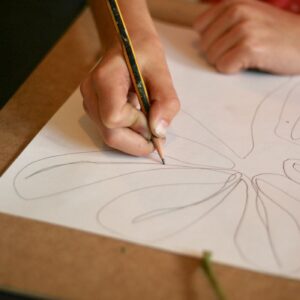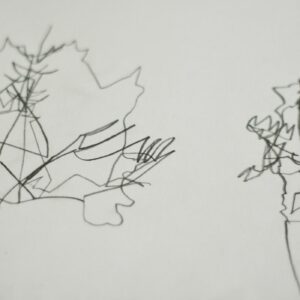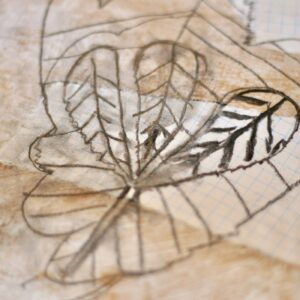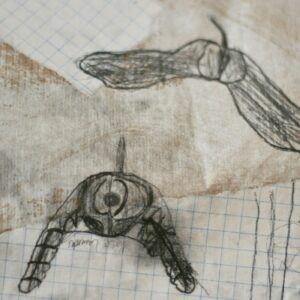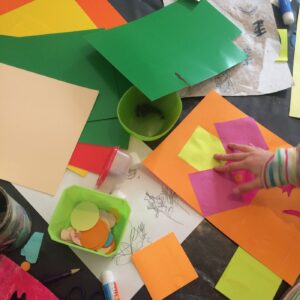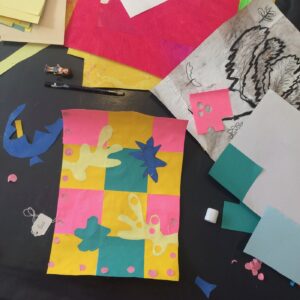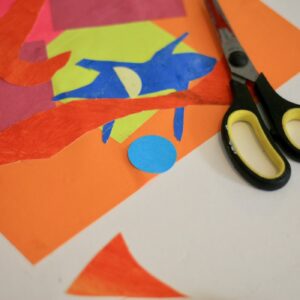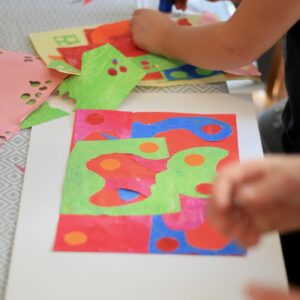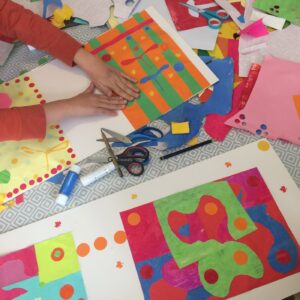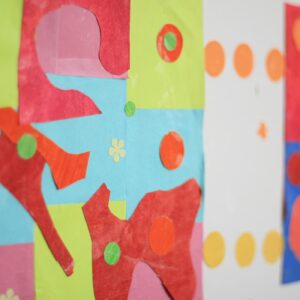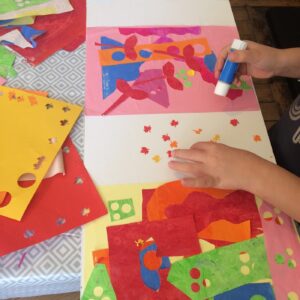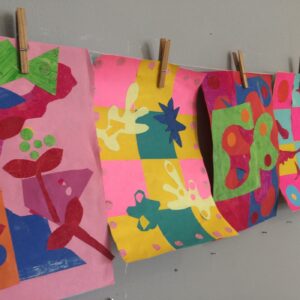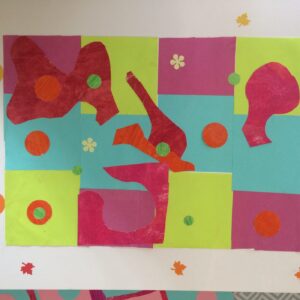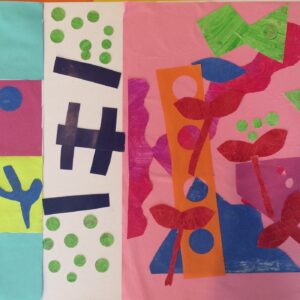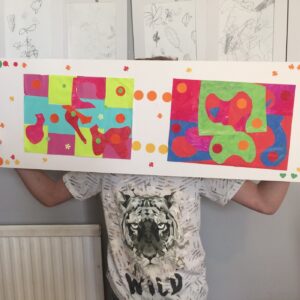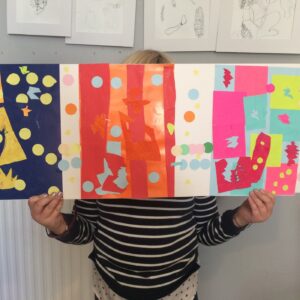October holidays ‘Art Camp’ – Matisse
October holiday art camp was all about the wonderful work of Matisse – taking inspiration from his later work when he could no longer paint and started to create artworks using cut-out paper which had been painted with gouache paint. He created these artwork, which varied in scale, with the help of studio assistants.
We started off the workshop by creating some ‘collage’ paper to be used in an observational drawing activity. This was achieved by glueing things like graph paper and old books to brown parcel paper, and then covering it with a light white wash. This is an interesting way of creating a surface to work on which isn’t plain white paper and can create some really interesting effects.
We then prepared some coloured paper – much like the paper Matisse would have used. Using tempura paint, the children collaboratively painted sheets of paper in a range of colours to give them a good stock of material for the main activity.
Once the paper had been prepared the children made a number of observational drawings. I chose a selection of leaves and plants from the garden. The children were guided through a number of drawing exercises to focus their attention on the qualities of leaves, focusing on textures and form. They were given a variety of drawing materials and surfaces on which to work with – including the collage paper which they created at the start of the session – and encouraged to play with marks, choose suitable materials for creating certain effects and closely observe the shapes created by the leaves and spaces between the leaves – looking at both the positive and negative areas.
After lunch we embarked on creating our patterned panels. I chose a long and narrow piece of board on which to create their designs. Much of Matisse’s cut-out artworks were large scale and filled a room, so creating a panel which would create a big impact was important to this project.
The children were given masses of coloured paper to create with – to supplement their painted paper. The next job was to create shapes by cutting – no drawing allowed!! Using their observational drawings to refer to, the children used scissors to cut-out shapes – this process allowed the simplification of the leaf shapes. We talked again about positive and negative shapes and the left-over paper from cutting could also be used to create a such an effect. Armed with a supply of shapes in a variety of colours, the children started to compose their designs. They were encouraged to play with the paper cut–outs – the juxtaposition of colours and shapes, to overlap, to play with scale, positive and negative spaces and to add in other decorative elements that they felt would enhance their design. The only rule – only scissors, paper and glue were allowed in this process!!
The final results were breathtaking!!! Bold colours, striking patterns and carefully considered compositions.
